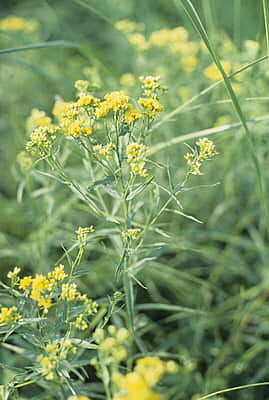







Euthamia graminifolia (Grass-leaved goldenrod) Seed Packet
Grass-leaved goldenrod Description:
Euthamia graminifolia is a native North American perennial plant belonging to the Asteraceae family. It is commonly known as grass-leaved goldenrod, as its leaves are long and narrow, resembling grass blades. The plant typically grows 2 to 4 feet tall and 1 to 2 feet wide, forming clumps that are supported by strong, upright stems.
The plant blooms in late summer and early fall, producing clusters of bright yellow, daisy-like flowers at the tops of the stems. The flowers attract a variety of pollinators, including bees, butterflies, and flies, and provide an important source of nectar for them as they prepare for winter.
Grass-leaved goldenrod is an adaptable plant that can thrive in a range of soil types and moisture levels, but it prefers full sun to partial shade. It is commonly found in meadows, prairies, and open woodlands throughout much of the eastern and central United States.
In addition to its ecological benefits as a pollinator plant, grass-leaved goldenrod has a variety of traditional medicinal uses. The plant has been used by Indigenous peoples for its anti-inflammatory and antiseptic properties, and in modern times it has been studied for its potential as a treatment for conditions such as arthritis and Lyme disease.
Native Range:
Grass-leaved goldenrod is most commonly found growing natively in the Upper Midwest and Northeastern United States. That said, it is native to Northwestern and Southeast United States.
Standard Plant Information:
Plant Height: 2' - 4'
Bloom Time: July - September
Preferred Habitat: Does well in full sun and moist to wet sandy or gravelly soil. Often found in meadows, ditches, fens, and shores.
